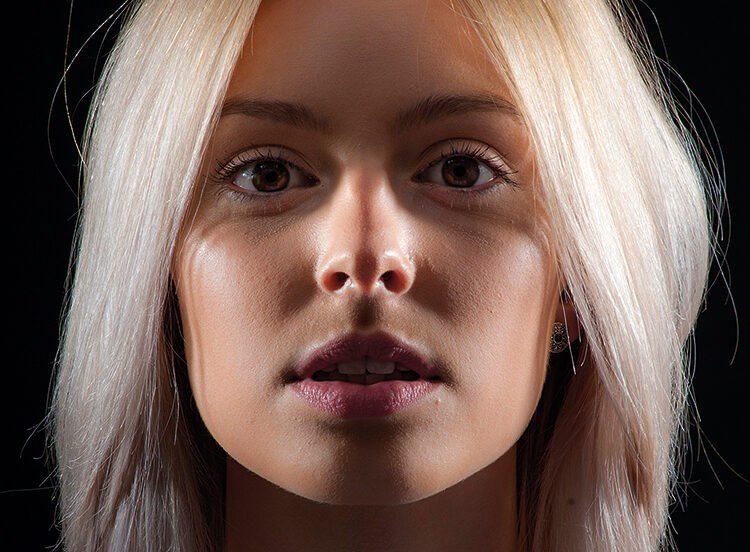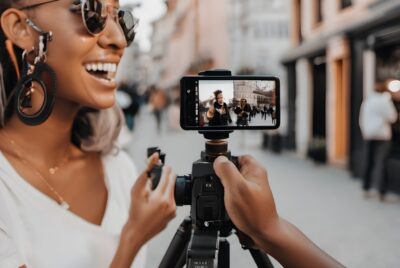Art of Portrait Photography: Master Techniques for Stunning Shots
Introduction
Portrait photography is more than just taking pictures of people—it’s about capturing personalities, emotions, and stories. Whether you’re photographing a professional model or a family portrait, understanding the art of portrait photography can help you create stunning images that stand out.
Why Portrait Photography is an Art
A great portrait isn’t just about sharp focus and good lighting—it’s about connection. The best portrait photographers create an atmosphere where their subjects feel comfortable, allowing their true expressions to shine. It’s the blend of technical skill and human interaction that makes portrait photography a unique and rewarding art form.
Essential Equipment for Portrait Photography
Best Cameras for Portraits
While you can take portraits with any camera, DSLRs and mirrorless cameras offer superior image quality, depth of field, and flexibility. Popular choices include the Canon EOS R5 and Sony A7 IV for their excellent autofocus and high resolution.
Lenses for Stunning Portraits
A fast prime lens like a 50mm f/1.8 or an 85mm f/1.4 is ideal for portrait photography. These lenses allow you to achieve a beautiful blurred background (bokeh) while keeping your subject sharp.
Lighting Equipment
Good lighting is essential for portraits. A softbox or umbrella diffuses light beautifully, while a reflector can help fill in shadows and create a natural look.
Useful Accessories
- Tripod: Helps stabilize your shots and allows for slower shutter speeds.
- Remote Shutter Release: Prevents camera shake when shooting at slower shutter speeds.
- Backdrop: Creates a clean and controlled background, especially for studio portraits.
Mastering Portrait Photography Techniques
Understanding Lighting
- Natural Light: Ideal for outdoor portraits. Soft morning or evening light works best.
- Studio Lighting: Provides full control over shadows and highlights.
- Rembrandt Lighting: Creates a dramatic look with one side of the face illuminated and the other slightly shadowed.
Perfecting Composition
- Use the rule of thirds to place your subject off-center for a more dynamic shot.
- Experiment with leading lines to draw attention to your subject.
- Frame your subject using natural elements like doorways or trees for added depth.
Working with Backgrounds
- Blurred Background: Achieve a soft background by using a wide aperture (low f-stop number).
- Interesting Textures: Use walls, greenery, or urban environments for added depth.
- Minimalist Backgrounds: Keep the focus solely on the subject by using plain backdrops.
Directing and Posing Subjects
- Make them comfortable: Talk to your subject to ease nervousness.
- Guide their posture: Subtle changes in head tilt or hand positioning make a big difference.
- Capture candid moments: Sometimes, the best portraits happen when the subject is unaware of the camera.
Types of Portrait Photography
Studio Portraits
Shot in a controlled environment, studio portraits focus on perfect lighting and composition.
Environmental Portraits
These portraits capture subjects in their natural surroundings, like an artist in their studio or a chef in a kitchen.
Candid and Lifestyle Portraits
More spontaneous and natural, these portraits capture real-life moments and emotions.
High Fashion Portraits
Often shot for magazines or fashion brands, these portraits use dramatic lighting, styling, and makeup to create a striking visual.
>>> Today’s deals for cameras on Amazon CLICK HERE <<<
Post-Processing Tips for Portraits
- Retouch skin carefully: Use tools like frequency separation in Photoshop for natural-looking skin.
- Enhance eyes: Brightening the eyes slightly can make a portrait more engaging.
- Adjust colors and tones: Use Lightroom or Photoshop to correct white balance and add creative color grading.
Common Mistakes and How to Avoid Them
- Harsh Shadows: Soften light using diffusers.
- Lack of Subject-Background Separation: Use a wider aperture to blur the background.
- Over-editing: Avoid excessive skin smoothing or unnatural effects.
How to Find Clients for Portrait Photography
- Social Media: Showcase your work on Instagram, Facebook, and Pinterest.
- Networking: Attend local events and offer free sessions to build a portfolio.
- Word-of-Mouth: Ask satisfied clients to refer you to others.
Pricing Your Portrait Photography Services
- Beginner: $50–$150 per session
- Intermediate: $200–$500 per session
- Professional: $1000+ per session
Pricing should reflect your skill level, experience, and market demand.
Conclusion
Portrait photography is a rewarding field that combines creativity with technical expertise. Whether you’re shooting in a studio or capturing candid moments, understanding lighting, composition, and human interaction will help you create powerful and memorable portraits. Keep practicing, refining your style, and engaging with clients to grow your portrait photography career!
>>> Today’s deals for cameras on Amazon CLICK HERE <<<
FAQs
1. What is the best lens for portrait photography?
A prime lens like an 85mm f/1.8 or 50mm f/1.4 is ideal for portraits, offering great sharpness and background blur.
2. How do I make my subjects feel comfortable during a shoot?
Engage in casual conversation, give them clear posing guidance, and allow them to move naturally.
3. Can I take professional portraits using natural light?
Absolutely! Golden hour (early morning or late afternoon) provides the most flattering natural light.
4. How do I edit portraits to make them look professional?
Use Lightroom or Photoshop to adjust brightness, contrast, and skin retouching while keeping it natural.
5. Is portrait photography a good career choice?
Yes! Portrait photography can be profitable, especially if you specialize in areas like weddings, business headshots, or lifestyle portraits.
Further reading
Here are two valuable resources that provide educational guidance on portrait photography:
-
Adobe: Portrait Photography Tips and Ideas from Experts
This comprehensive guide covers essential aspects of portrait photography, including lens selection, focusing techniques, and the impact of different focal lengths on facial features. It offers expert insights to help you capture compelling portraits. -
Pixpa: Guide to Portrait Photography – Top Tips, Styles & Poses
This article delves into various styles of portrait photography, offering practical tips on focusing, location selection, posing, and capturing authentic emotions. It’s a great resource for both beginners and seasoned photographers looking to refine their skills.
These resources complement the information provided in the article and can further enhance your understanding and practice of portrait photography.





Comments are closed.